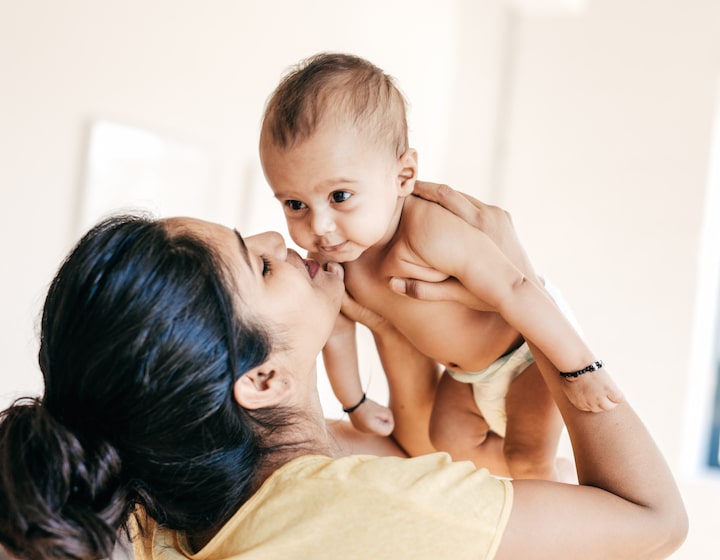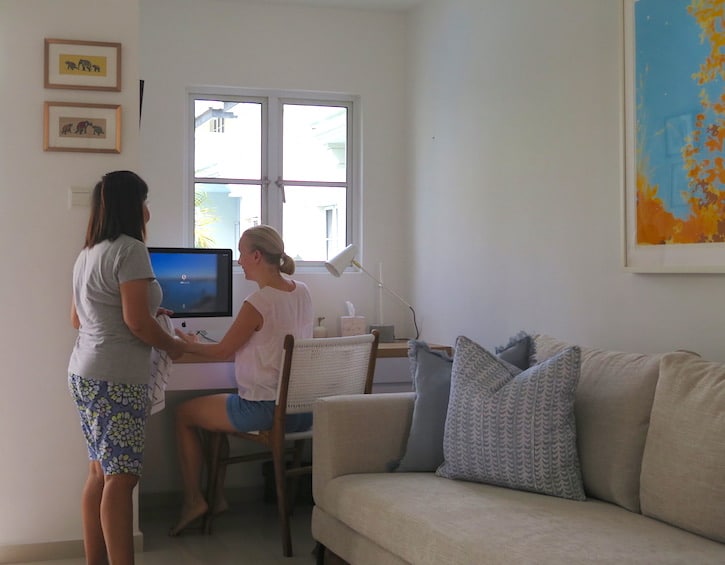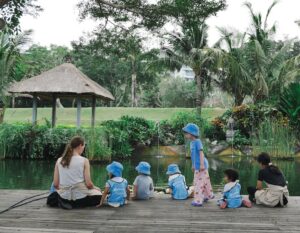
Tax season in Singapore is here! Did you know that you’re entitled to a range of parenting and family discounts such as the parenthood tax rebate?
Filing your taxes in Singapore is a pretty user-friendly experience. What’s wonderful about Singapore’s tax system is that it offers plenty of rebates for families and parents; even expats – as long as they pay taxes – are eligible for some relief. Not only is there a parenthood tax rebate, there’s also plenty of other financial rebates and benefits for different family needs. Wondering which ones you should know about? Keep reading for our guide to key family-friendly and parenthood tax rebates in Singapore, which are intended to save families in Singapore money. If you need a little more clarity on any of the info, click on the various links which redirect to the relevant IRAS (Inland Revenue Authority of Singapore) pages.
Read more: Discounts, Freebies and Deals & Money-Saving Hacks for the Family
Who pays taxes in Singapore?
According to the Inland Revenue Authority of Singapore (IRAS), an individual will be assessed as a tax resident if they are:
- Singapore Citizens (SC) or Singapore Permanent Residents (PR) who reside in Singapore except for temporary absences;
- Foreigners who have stayed / worked in Singapore (excludes director of a company) for 183 days or more in the year preceding the Year of Assessment (YA).

Parenthood Tax Rebate (PTR)
The Parenthood Tax Rebate (PTR) scheme is a one-time tax abatement that can be claimed in the year following a child’s birth (though any child born after 2008 is currently eligible if you haven’t claimed previously). You can claim for every child you have, and in fact get rewarded the more children you have! If you and your spouse are both tax-paying residents, you can share PTR based on apportionment.
Who qualifies: Anyone who is a Singapore tax resident that is married, divorced, or widowed in the relevant year, with a child who is a Singapore citizen at the time of birth (or within 12 months thereafter). NB: There are other qualifiers if a child is adopted or parents become married subsequent to a child’s birth but register them before turning six. Click here for a simple eligibility tool.
How much money you save: Parents receive a $5,000 offset for their first child, an additional $10,000 for their second child, and $20,000 each for their third, fourth, and any subsequent children. Any unutilised balance is automatically carried forward to offset your future tax payable.

Foreign Domestic Worker Levy (FDWL) Relief
Available to tax-paying expats as well as Singapore citizens and PRs who employ a helper, the FDWL is meant to encourage married women to stay in the workforce (singles and married men are not eligible). The amount of relief offsets earned income.
Who qualifies:
Any woman or her husband who employed a foreign domestic worker in 2022 who is:
- married and live together;
- married but the husband is not a tax resident in Singapore;
- a woman who is separated, divorced or widowed and has children who live with her and on whom she could claim child reliefs.
How much money you save: With this deduction, you may claim twice the total foreign domestic worker levy paid in the previous year on one foreign domestic worker. For instance, in 2022 when the monthly levy was $300, an individual could have claimed $3,600 ($300 x 12).
Working Mother’s Child Relief
With an intention to reward families with children who are Singapore citizens, and encourage women to remain in the workforce after having children, the WMCR enables women to claim 15- 25% off their earned income (with an income relief cap of $80,000).
Who qualifies:
- Working mothers who are married, divorced or widowed;
- Women with taxable earned income from employment or through pensions, from trade or business, or through a profession or vocation (taxable earned income is your total earned income less allowable expenses.);
- Women who have maintained a child who is a Singapore Citizen as of 31 December 2022 and has satisfied all conditions under the Qualifying Child Relief (QCR) or Handicapped Child Relief (HCR).
How much money you save: A woman can claim 15% of her income against her first child, 20% of earned income against her second child, and 25% of her income for a third (or fourth, or fifth, etc.) child. The total claim is capped at 100% of the mother’s earned income, with a total personal income relief cap of $80,000. WMCR can be combined with Qualifying Child/Handicapped Child Relief (see below), but the total cap is $50,000 per child.
Qualifying/Handicapped Child Relief
This basic deduction gives families a standard credit per child in the household.
Who qualifies:
- Singapore citizens with any child under 16 who did not earn more than $4,000 (includes allowances and salaries from National Service, internship, school attachment and part-time employment. It does not include scholarships, bursaries and similar allowances);
- Any child who is considered mentally or physically handicapped. QCR/HCR can be shared between parents.
How much money you save: Families can deduct $4,000 per child under Qualifying Child Relief, or $7,500 per child under Handicapped Child Relief. Parents may claim one relief per child (not both), and a woman may claim up to $50,000 in combination with Working Mother’s Child Relief.

Grandparent Caregiver Relief
Do your parents or in-laws help look after your kiddos? GCR is given to working mothers whose parents, grandparents, parents-in-law or grandparents-in-laws (including those of ex-spouses) take care of their children.
Who qualifies: The GCR applies to a working mother who is married, divorced or widowed. She must be living in Singapore with at least one child who is a Singapore citizen aged 12 or younger as of 2022 (if a child is handicapped the age restriction does not apply).
Caregivers must also be living in Singapore (this can include foreign dependants, so long as they’ve been there for a period of at least eight months in 2022), and not working or carrying on any other trade, business, profession, vocation in 2021. Note that only one person can claim on any particular caregiver (for instance, if you and your brother both rely on your parents, you could not both claim GCR on your mother).
How much money you save: You can claim up to $3,000 in GCR.
Filing for the Year of Assessment 2023 begins on 1 March 2023, with an e-filing deadline of 15 April 2023. Click here to get further details and information from IRAS.






 View All
View All





 View All
View All









 View All
View All







